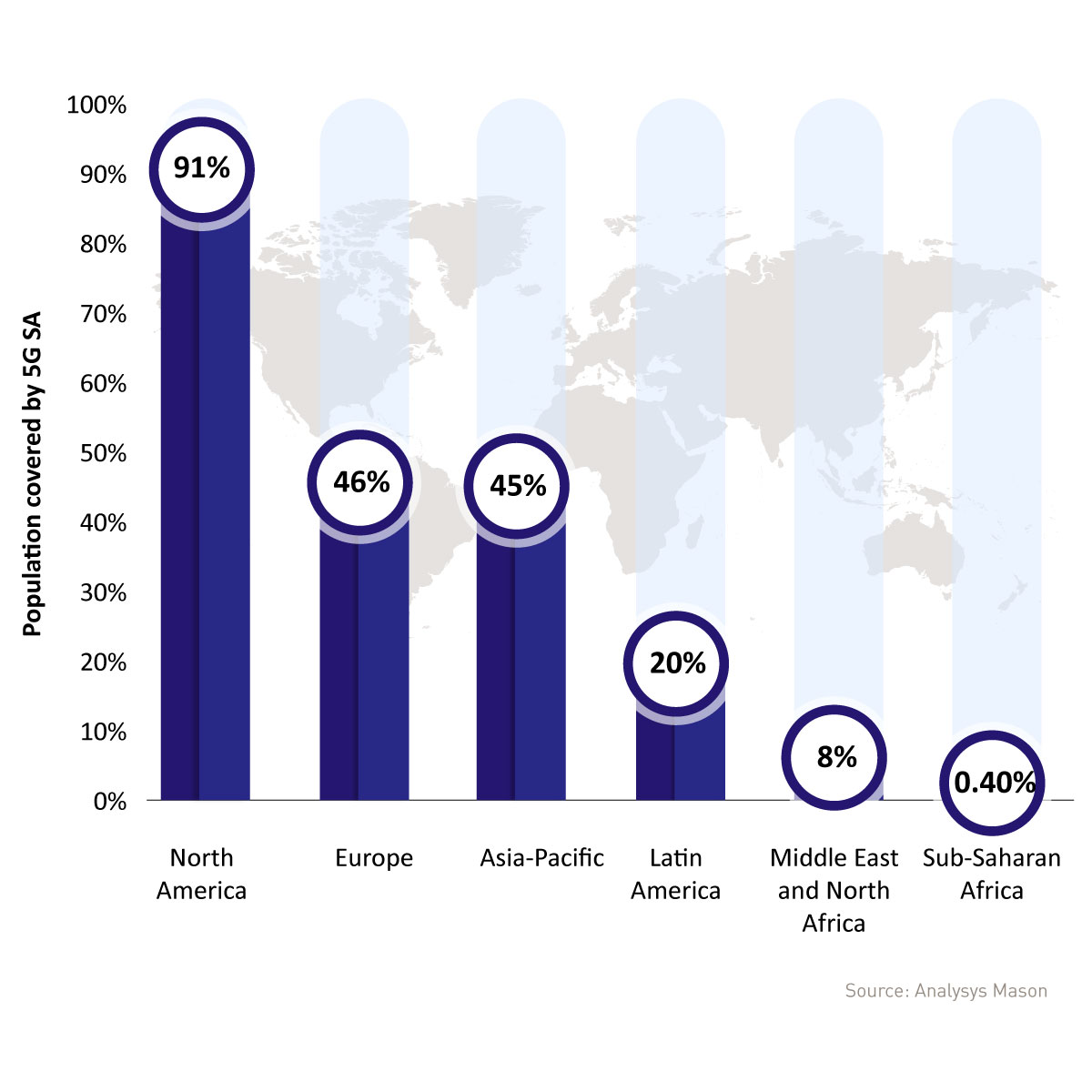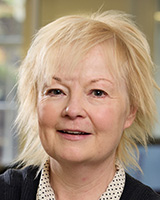5G for all – what is Europe's plan?
The European Commission’s (EC) objective to maintain Europe’s position as the most connected continent has led to bold targets for 5G coverage. Operators and regulators are examining what these targets really mean, what the objectives are, and how to deliver the required connectivity in a way that is deployable, sustainable and economically viable.
The EC has reasserted its plans for a digital society
At the outset of 5G implementation, it was widely envisioned that 5G would enable new use cases and user experiences. This would create new services and experiences for consumers, but also provide tailored connectivity for ‘5G verticals’, referring to the wide variety of enterprise and industrial use cases, with ranging requirements for high-speed connectivity, low latency and secure, on-site networking.
However, the reality of 5G has so far proved to be somewhat different to the vision. European mobile network operators (MNOs) have not seen significant revenue growth from offering 5G mobile broadband services, contributing to a slower-than-expected evolution from initial 5G ‘non standalone’ (NSA) networks to the full 5G standalone (SA) capabilities. As a result, the high-quality connectivity capabilities that some of the new 5G use cases require have been slow to emerge.
The newly installed EC has reassessed and reasserted the desire for Europe to remain at the forefront of technological innovation and to be the world’s most connected continent. These assertions are underscored in the recent EC white paper How to master Europe’s digital infrastructure needs, a broad-ranging paper encompassing the new political climate around sovereignty, market definitions, the role of AI, cloud and social media, and a range of other policy issues affecting digital infrastructure. The white paper also talks explicitly about how to achieve the targets set out in earlier European policy, including the Digital Decade initiative.
The white paper argues that Europe must have high-quality connectivity, and that connectivity needs to be reliable and secure. It needs to be for everybody and everywhere. On 5G, the EC reiterates the Digital Decade target of next-generation wireless networks offering high-speed coverage of all populated areas by 2030.
From a policy perspective, the 5G coverage targets are ambiguous, especially without explicit definitions of ‘high-speed’ or 5G ‘performance’. With national governments adopting various targets inspired by the European goals, investment budgets may be skewed towards deploying 5G to meet specific objectives of ‘coverage of all populated areas’, rather than meeting the governing principle of ‘high-quality connectivity’ in a broader sense. Also, linking a 5G coverage objective to populated areas might suit the types of deployment needed for mobile broadband services (for example, to consumers), but is not necessarily optimal for other use cases, such as industrial, transportation or healthcare.
The critical question for policy makers is: what are we trying to achieve through these targets for 5G?
Coverage targets are ambiguous, and may obstruct investment in enabling technologies
Covering 100% of populations with high-speed 5G services may be desirable politically, but economically very challenging. If ‘high-speed’ is interpreted as deploying 3.4–3.8GHz spectrum (a key band for offering the highest-speed 5G services), this is highly capital intensive, not least due to the cost of deploying massive multiple-input, multiple-output (MIMO) antenna systems in terms of making sites suitable and the cost of the antennas. It may also be overkill; lower-band 5G or a good-quality 4G connection may be sufficient for users in many locations. Even for users with 5G devices, a significant portion of the user’s time may be spent connected to 4G, when outside of 5G coverage.
High-speed 5G based on 3.5GHz spectrum would require a significant portion of operators’ available funds to be devoted exclusively to extending deployment of 3.5GHz. This may reduce funds available to invest in the other enabling technologies needed for 5G to address new use cases defined at the outset of 5G implementation. Enabling technologies include SA core networks, network cloudification and virtualisation of radio access networks (RANs).
The need for greater investment is relevant in the case of 5G SA, as European policy makers want to make sure that Europe’s connectivity is competitive, and they are concerned about why coverage and take-up of 5G SA has so far made slow progress.
Figure 1: 5G SA coverage, by region, to date (based on 5G SA operators’ publicly disclosed data)
 Moving from 5G NSA to 5G SA brings the promise of more reliable connections and more efficient management of traffic, as well as a substantial increase in core network capabilities. 5G SA should enable 5G to better support new and varied use cases, especially in the industrial sphere (whether over public or private networks), but this market is developing slowly.
Moving from 5G NSA to 5G SA brings the promise of more reliable connections and more efficient management of traffic, as well as a substantial increase in core network capabilities. 5G SA should enable 5G to better support new and varied use cases, especially in the industrial sphere (whether over public or private networks), but this market is developing slowly.
A critical obstacle to the roll-out of 5G SA may be lack of consumer demand stemming the modest observable consumer benefit that 5G SA represents, compared with the substantial, and much-needed, increases in speed of previous mobile generation upgrades; without observable benefit, take-up may be limited or delayed. There are also further barriers to realising enterprise and industrial use cases, due to complexities in putting the full industrial solution together, which may require costly devices, bespoke applications and software as well as 5G connectivity and an SA core.
Policy makers should align targets with what consumers most need
The priority of Europe’s policy makers should be on ensuring that all of its consumers (citizens, industry and enterprises) have access to the connectivity they need, which is a combination of speed, coverage, reliability, security and price.
Flexibility of approach may have a significant influence on the ability to hit the stated objective of high-speed, wireless network coverage by 2030: that might include alternative technologies for the most remote areas (for example, via satellite), better interconnection between mobile and Wi-Fi and/or different ownership and deployment models (such as network sharing), as well as innovative financing models.
Ultimately this needs to be led by consumers’ near-future and longer-term needs.
How Analysys Mason can help
Analysys Mason has been helping to shape the European telecoms landscape since the liberalisation of the sector 40 years ago. Our detailed experience of consumer usage, technological innovation and regulation gives us extensive and valuable insight into market structures, consumer behaviour and the various technologies that support operators in giving all EU citizens access to fast, safe, wide-area coverage.
For more information on how we can help with advice on 5G and beyond, on evolving business models and mobile technology upgrades, please contact Janette Stewart or Julia Allford.
Janette and Julia will both be attending the European 5G Conference in Brussels on 28–29 January 2025, along with the following other experts in this area: Caroline Gabriel, Mark Colville, Adam Salac, Chris Nickerson, Samer Mourad and Rupert Wood. They would be delighted to talk to you about the development of broadband fixed, mobile and wireless services across Europe and around the world.
Article (PDF)
DownloadAuthors

Janette Stewart
Partner, expert in spectrum management, policy and valuation
Julia Allford
ManagerRelated items
Article
5G Advanced: commercialisation will depend on mapping performance improvements to key use cases
Article
Operators must lead 6G R&D to ensure technologies generate new revenue streams and enable cost savings
Video
The state of 5G

